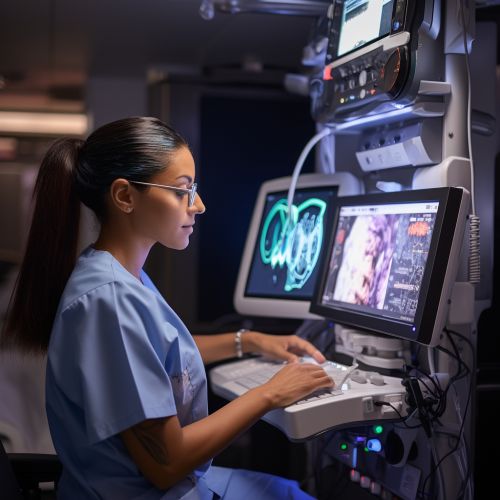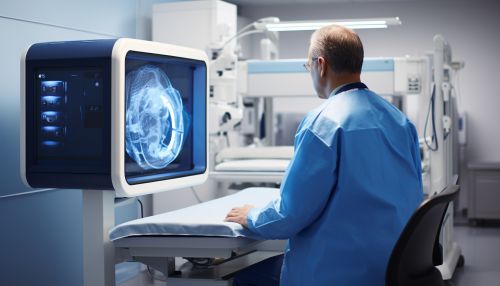Multimodal Imaging
Introduction
Multimodal imaging is a technique used in the field of medical imaging that combines two or more imaging modalities to provide comprehensive information about a patient's anatomy and physiology. This approach allows for the simultaneous or sequential acquisition of data, which can provide complementary information and enhance diagnostic accuracy.


Overview
The concept of multimodal imaging emerged from the need to overcome the limitations of individual imaging techniques. Each imaging modality, such as CT, MRI, PET, and ultrasound, has its strengths and weaknesses. For instance, while CT and MRI provide excellent anatomical detail, they lack the functional information that can be obtained from PET or SPECT. Conversely, PET and SPECT offer functional data but lack the spatial resolution provided by CT and MRI. Multimodal imaging combines these modalities to provide both anatomical and functional information, thereby improving diagnostic accuracy and patient management.
Principles of Multimodal Imaging
Multimodal imaging involves the integration of data from different imaging modalities. This can be achieved through hardware-based fusion, where the imaging devices are physically combined into a single system, or software-based fusion, where images from separate devices are digitally combined.
Hardware-based fusion systems, such as PET/CT and PET/MRI scanners, allow for the simultaneous acquisition of data, ensuring accurate spatial alignment of the images. However, these systems are expensive and require significant infrastructure and expertise to operate.
Software-based fusion involves the post-acquisition alignment of images from different modalities. This approach is more flexible and cost-effective, as it can utilize existing imaging equipment. However, it requires sophisticated image registration algorithms to ensure accurate alignment of the images.
Applications of Multimodal Imaging
Multimodal imaging has a wide range of applications in clinical practice and research. In oncology, it is used for tumor detection, staging, and monitoring response to therapy. For instance, PET/CT combines the metabolic information from PET with the anatomical detail from CT to accurately localize and characterize tumors.
In neurology, PET/MRI is used to study brain disorders such as Alzheimer's disease, Parkinson's disease, and epilepsy. The functional data from PET can reveal changes in brain metabolism, while the high-resolution images from MRI provide detailed information about brain structure and pathology.
In cardiology, SPECT/CT and PET/CT are used for the assessment of coronary artery disease and myocardial viability. These techniques provide both anatomical and functional information, aiding in the diagnosis and management of heart diseases.
Future Perspectives
The field of multimodal imaging is rapidly evolving, with ongoing research aimed at improving image quality, reducing radiation dose, and developing new imaging probes. There is also growing interest in the integration of other imaging modalities, such as optical imaging and ultrasound, into multimodal imaging systems.
Furthermore, advances in artificial intelligence and machine learning are expected to play a significant role in the future of multimodal imaging. These technologies can assist in image acquisition, processing, and interpretation, potentially improving diagnostic accuracy and efficiency.
